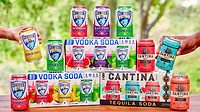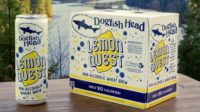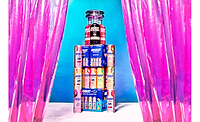Flavor helps ready-to-drink alcohol go mainstream
Premiumization, expanding beyond core consumers vital for continued RTD alcohol’s growth

Image courtesy of Molson Coors Beverage Co.
In the 1966 R&B classic “Get Ready,” The Temptations describe preparing for the impact of a deep love as the group sings “And I’m bringing you a love that’s true/So get ready, so get ready.” In the beverage alcohol market, retailers and wholesalers have been “getting ready” by embracing consumers’ affinity for ready-to-drink (RTD) alcohol products. Whether it be hard seltzers, RTD cocktails, hard teas or an emerging creation consumers seem eager to try the newest RTDs.
Brian Sudano, CEO and managing partner at S&D Insights, Norwalk, Conn., credits this movement to a perception shift in consumers.
“As time has moved forward, there is no longer a stigma associated with drinking flavored beverage alcohol. Recall that this market began decades ago with wine coolers,” Sudano says. “Spirit RTDs such as Bacardi Breezers were initially not received broadly and products were not taken seriously. As time has progressed, consumers continued to move toward this format but not until hard seltzers emerged did it become part of the mainstream.”
Sudano adds that the acceptance of flavored products meant that consumers no longer needed “to acquire a taste to consumer beverage alcohol,” but also taste preferences have evolved.
“In addition, younger consumer palates are not evolving away from sweet beverages and greater branding activity/investments by market participants and more relevant innovation,” he says.
In its report “RTD Alcoholic Beverages – US – 2023,” Chicago-based Mintel also highlights that flavor has been a driving force for the category and will be important going forward.
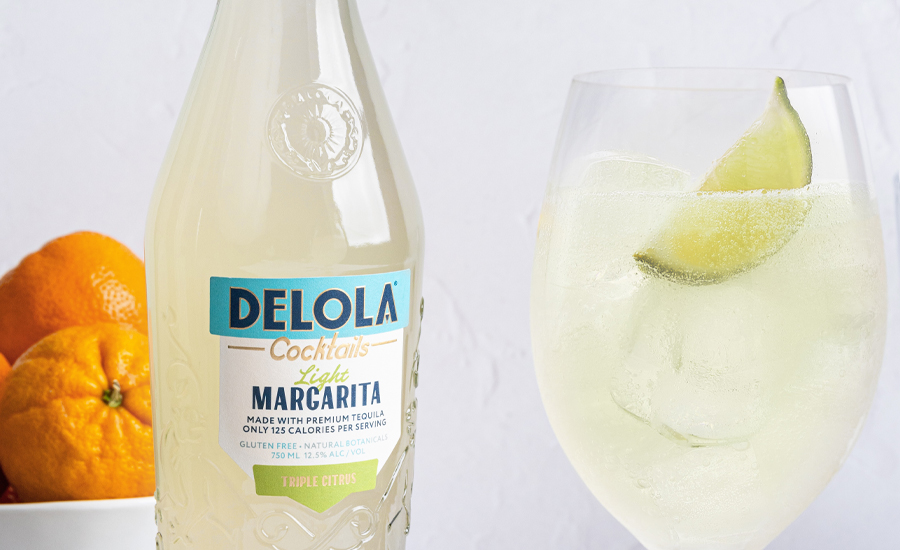
“Flavor exploration is a key driver of RTD popularity and yet also perhaps contributes to blurry category perceptions,” the report states. “While brands should remain focused on flavor, expanding versatility and value in new flavorful ways can help to elevate perceptions and increase occasions.”
This spring, Molson Coors Beverage Co. debuted its newest brand, Happy Thursday, the much buzzed-about fruity-flavored line of spiked refreshers. The non-carbonated line is available in four flavors: Strawberry, Pineapple Starfruit, Mango Passionfruit and Black Cherry.
“Happy Thursday is a flavorful spiked refresher that will set the weekend feel ― it’s smooth, bubble-free, with refreshing flavor,” said Amanda DeVore, senior director for marketing innovation at Molson Coors, in a statement at the time of the launch. “This delicious line is our first-of-its-kind entry in the flavored alcohol category, and we know our fans are going to experience love at first sip.”
Yet, when it comes to which flavors are having the most impact, S&D Insights’ Sudano notes that it really depends on the brand and segment they are playing in.
“Since most of the major flavors have been incorporated in many of the brands, we are seeing the movement toward fusion flavors (combinations),” he adds. “Look for evaluation to adult oriented flavors including bitters and spices.”
Another aspect influencing flavor innovations in RTD alcohol has been the adoption of licensing agreements with non-alcohol brands.
“The success of flavors in beverage alcohol facilitated the movement of non-alcoholic beverage companies to enter into the alcoholic arena,” Sudano says. “Among the many core competencies of beverage companies includes the development and launch of brand flavors that resonate with consumers. As markets mature, beverage players look for avenues to extend their brands.
“So it makes sense for them to extend into the ‘flavored beverage alcohol’ market to engage with more mature consumers and leverage brand awareness levels,” he continues. “It also facilitates greater opportunities and connections with consumers during the consumer journey with a brand. The reason for licensing versus direct launch in many cases is due to regulatory compliance. Licensing streamlines the process.”
Although RTD alcohol is in the spotlight, Mintel’s report highlights how the category must avoid leaning on the trendy factor when looking for long-term success.
“RTDs are driving the alcoholic beverage industry in a way that's fun to watch,” it states. “Yet, while being the ‘it’ drink is exciting and many brands aspire to trendiness, it's often fleeting, especially with a young, perhaps fickle audience. Building broader reputations beyond an ‘it’ factor for the long term will be key to keeping this momentum.”
Among the ways the market research firm notes that brands can do so include positioning products that appeal to multicultural consumers, building connections with female consumers, and engaging with consumers who are 45 and older.
“While a lot of attention is paid to Gen Z (and millennials), Gen X RTD drinkers are just as likely as millennials to enjoy trying new RTD varieties, and so are RTD-drinking Boomers for that matter, suggesting there is room to engage this base by showing them some love,” the report states.
S&D Insights Sudano remains optimistic about RTD alcohol’s ability to grow its audience as the market has seen a diversification of products in terms of alcohol bases and ingredients.
“With the segment reaching critical mass several years ago, over 17 billion servings or 700 million cases, and its relative under-development within beverage alcohol at around 13% of servings, the future is bright,” Sudano says. “Consider opportunities we are beginning to see in wine-based RTDs such as Beatbox and Buzz Balls. There is a lot of opportunity for others to innovate in this space as the number of competitive brands is somewhat limited. Macro trends suggest that the combination of flavor with unique ingredients in a convenience format will continue to drive growth in beverage alcohol.”
Diverse offerings
Despite RTD alcohol’s future looking bright, the category has pockets that are thriving, but others are adjusting as growth has decelerated when taking a granular look.
Sudano explains that as a group, RTD alcohol continues to perform well, but the segments are all at different stages in their development.
“It is my view that hard seltzer should be viewed as one whether spirit based or beer based,” he says. “If you look at the segments as hard seltzer, FMBs, RTD cocktails and hard teas, at this moment hard teas and RTD spirits are thriving. But it is difficult to claim that the other segments do not have positive trends.
“Hard seltzer is segmenting up market with High Noon, spirit based, while the largest brand by volume White Claw is flat on volume basis year to date and poised to return to growth in back half of year,” Sudano continues. “At the same time, popular emerging [non-alcohol] (NA) brands like Spindrift have entered the segment being well received where available.”
Sudano adds that flavored malt beverages (FMBs) have begun to post growth again, highlighting Cayman Jack’s 20% growth as well as Monster Beverages releasing Beast Unleashed and Nasty Beast and gaining distribution.
Yet, hard tea also has hit its stride. “Tea is growing rapidly off of a sizable, greater than 20%, off of a sizable base lead by Twisted Tea,” Sudano says.
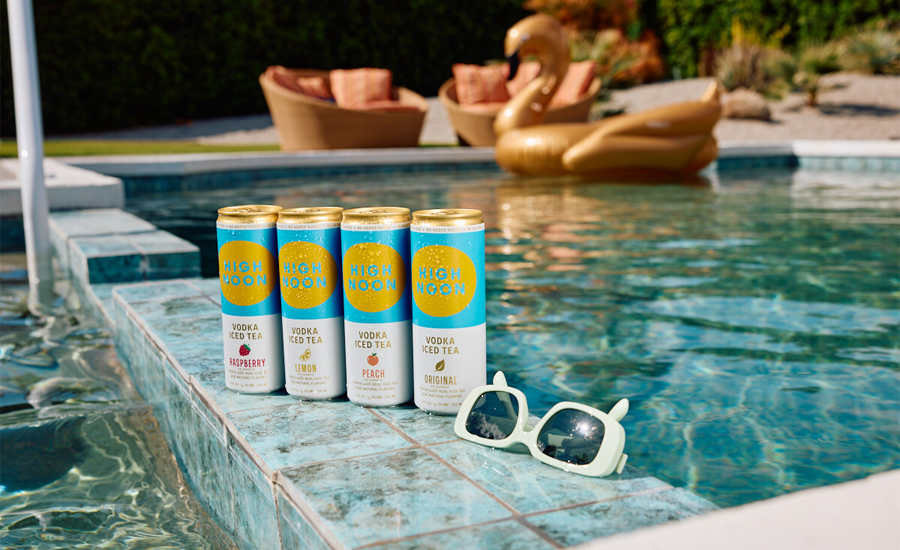
Earlier this year, Spirit of Gallo’s High Noon, released High Noon Vodka Iced Tea. Made with real vodka, real iced tea, and no added sugar, High Noon’s new non-carbonated, gluten free hard teas are available in four flavors: Original, Peach, Lemon and Raspberry.
“Hard tea was one of consumers’ most frequent RTD category purchased in 2023, which created an opportunity for High Noon to provide a premium alternative in a way only the brand can with real vodka and real iced tea,” said Britt West, executive vice president and general manager at Gallo, in a statement, citing IWSR “RTDs Strategic Study 2023 – United States.” “With this launch, we’ve taken a beloved classic and elevated it to new heights, delivering a beverage that embodies the spirit of summer in every sip.”
Spirits-based RTDs continue to do well with more entrants in the segment, but Sudano cautions that a deceleration might be on the horizon.
“[I]t appears to be ready for a consolidation period similar to hard seltzer several years ago that is likely to impact the performance of the segment,” he says.
Beyond RTD’s diverse product offerings, brands also have explored creative ways to take packaging to the next level.
“The segments have evolved over the years from predominantly glass to aluminum,” Sudano says. “Aluminum fits with convenience trends and portability. However, packaging needs to fit with a brand’s position. Large package multi-serve formats (e.g. 24 ounce, etc.) are working in C-stores. Four packs work to hit price points and glass works to communicate premium position with some brands. Packaging truly plays a role but it begins with the brand proposition. For now, aluminum will be the dominant package.”
As RTD alcohol has been a bright spot in the overall beverage alcohol market, experts do caution that consolidation will take hold eventually. During this time, market leaders are sure to emerge.
“During any consolidation period, brands with strong/unique brand position or products, will survive and thrive long term,” Sudano says. “[An] example is how White Claw is growing on a dollar basis with volume growth to follow after two years of consolidation in the hard seltzer category. On the RTD spirit side, brands like On The Rocks that are upscale, with unique packaging and authentic cocktail taste and feel will continue to thrive in the face of challenges.”
Yet, five-year outlook for RTD alcohol looks promising. Mintel’s report highlights how RTDs currently are piquing consumer interest and will next move into a premiumization state, particularly within spirits-based RTDs. In the long term, the market research firm asserts that innovation, expanding consumer occasions and the ability to reach consumers across these occasions will support the category’s growth.
Looking for a reprint of this article?
From high-res PDFs to custom plaques, order your copy today!




